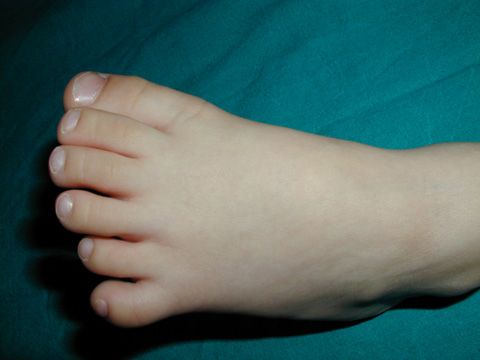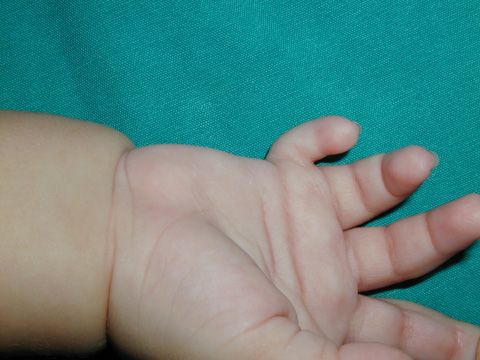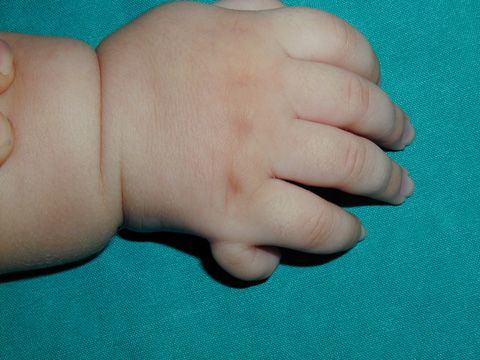Polydactyly is called presence of more fingers than the normal which is observed in the thumb, small finger or rarely middle fingers. It is frequently seen either in hand or in the foot (Figure 1). Polydactyly is one of frequent upper extremity abnormalities. Mostly we observe extra thumb and second, related with the fifth finger.
Polydactyly may be examined within two groups as complete developed excessive finger or less developed excessive finger (frequently as a skin extension).
Thumb polydactyly is observed in 8 of 100,000 live birth (Figure 2,3). Excess thumb is observed at every level of the finger, approximately 45% of cases is from the first joint and 15-20% from the second joint. Surgical treatment should be taken to the agenda when medical conditions are suitable after the age of one. As a treatment approach, weak and less functioned finger is removed. If the excess finger has some functions and movements even limited, tendons that provide to make them is transferred to the finger that will be protected. If no difference can be observed between double fingers, combining may be done by knitting bones of the two fingers in cases that the problem is especially in the end.











